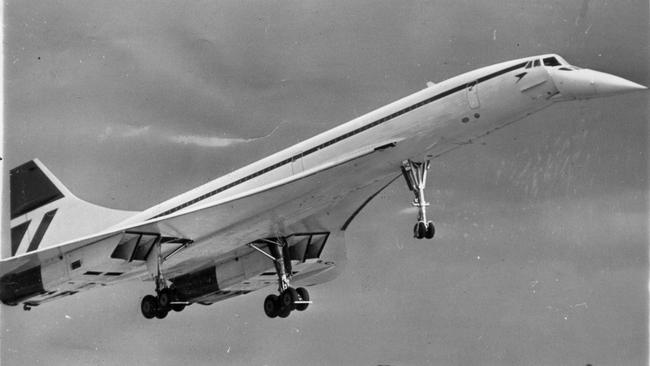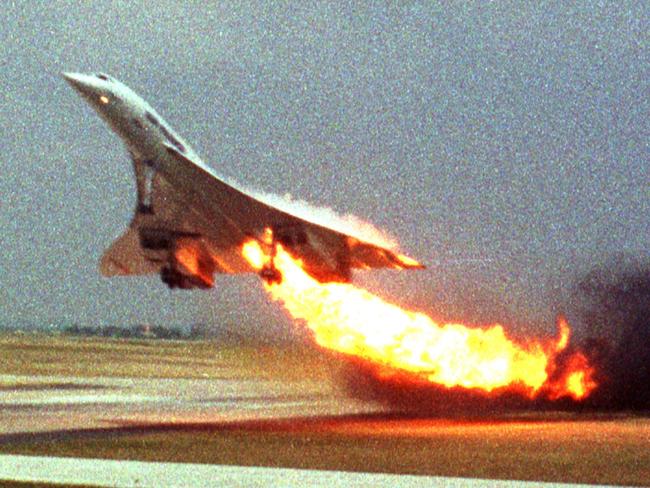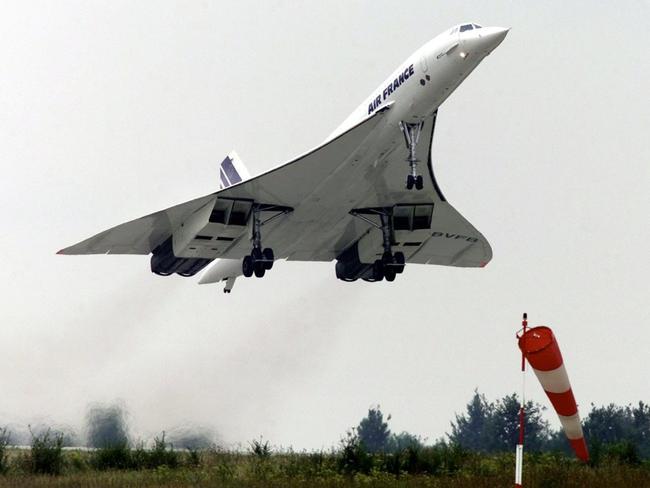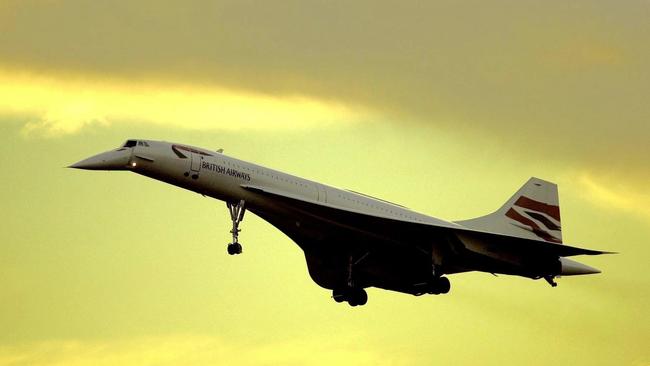Concorde’s speed of sound travel proved a costly joint-venture
AMONG the destinations desperate for supersonic flight speeds, Australia ranks among prime candidates. But the sleek beak-nosed British-French Concorde jets that cut travel time between and London and New York to less than four hours only twice visited Australia.

Today in History
Don't miss out on the headlines from Today in History. Followed categories will be added to My News.
AMONG the destinations desperate for supersonic flight speeds, isolated Australia ranks among prime candidates.
But the sleek beak-nosed British-French Concorde jets that cut travel time between and London and New York to less than four hours only twice visited Australia.
Operational costs, refuelling stops reducing time gains, and haggling over London landing rights for Indian and Malaysian carriers, in return for supersonic flight approval over their territory, conspired to kill promises of a thrice-weekly London-Melbourne service. The Australian setback was among many to plague the once-promising concept, after the first Concorde prototype was unveiled 50 years ago in Toulouse, France, on December 11, 1967.
Still, the fact a Concorde ever lifted off the ground was a miracle, given it was effectively designed by a host of committees, and a treaty: French and British politicians and businessmen met regularly to direct the efforts of British and French engineers, and ensure production was equally shared between both nations.

Travelling faster than the speed of sound had captivated aeronautical engineers in the US, France and Britain after US Air Force Captain Charles “Chuck” Yeager made the first manned supersonic flight on October 14, 1947.
Britain led passenger jet travel in July 1949, when de Havilland revealed its first sleek Comet that hit speeds of 807km/h. But Comets were grounded for two years after two exploded over the Mediterranean in early 1954, killing all on board. When Comets were ready to fly again, US McDonnell Douglas DC-8s and Boeing 707s had an unbeatable lead.
The Royal Aircraft Establishment at Farnborough, 50km out of London, had concluded metal fatigue of Comet windows caused the explosions. RAE director Arnold Hall then asked aeronautical engineer and deputy director Morien Morgan, who had researched supersonic civilian aircraft feasibility since 1948, to form a committee to study a supersonic aircraft.
Morgan, later known as the “father of Concorde”, and Farnborough officials arranged a meeting in October 1956 with heads of Britain’s nine airframe and four engine companies at Aviation Ministry headquarters.
Ministry permanent secretary Cyril Musgrave, chairing the meeting, faced stark facts: “Major airlines were buying the 707 or the DC-8 and there was no point in developing another subsonic plane. We felt we had to go above the speed of sound, or leave it.”

Despite some 400 written submissions to prove civil supersonic transport was commercially viable, manufacturers were dubious. They agreed, providing the government paid, adding to the $140 million sum already paid out by the British government for British aviation industry errors.
The Supersonic Transport Aircraft Committee (STAC), chaired by Morgan to unite government, business, airlines and Farnborough officials, met in November to produce a report to demonstrate that a supersonic passenger plane was feasible and desirable. German aerodynamicist Dietrich Kuchemann, based at Farnborough after Britain won a bidding war against the US in 1945, declared in 1957 that a supersonic passenger plane with a thin delta wing was “just possible”.
In 1959 the first STAC report had two possible designs, an M-wing Mach 1.2 medium range craft, or a straight wing Mach 1.8 with six wingtip engines. RAE studies favoured a delta wing design, with contracts awarded in late 1959 to Hawker Siddeley and Bristol, which had been researching Mach 3 reconnaissance aircraft.
With an original cost estimate of £70 million, which blew out to at least £1.3 billion, STAC required Bristol to share the cost with an overseas partner. The US, France and Russia were all pursuing supersonic transport designs when the technical director of Sud Aviation in France met to discuss a partnership with British designers, supposedly surprised to find Sud had designed a very similar aircraft.

Sud, also under government orders to recruit a foreign partner to offset design costs, revealed plans for its Super-Caravelle at the Paris Air Show in 1961. In November 1962, Britain and France signed a treaty to share costs and risks in producing a supersonic aircraft. Manufacturing was divided between both nations, with British Aerospace and French Aerospatiale responsible for the airframe, while Britain’s Rolls-Royce and France’s SNECMA developed the jet engines.
The delta wing Concorde, with a maximum cruising speed of 2179km/h, or Mach 2.04 made its first flight on March 2, 1969. Although flew from London to New York in about three hours, development costs were so great they could never be recovered from operations, and the aircraft was never financially profitable.
With 20 Concordes built and 14 put into airline service, a Concorde disaster in France in 2000 killed 113 people. Concorde was grounded after a final flight on October 24, 2003.
Originally published as Concorde’s speed of sound travel proved a costly joint-venture


